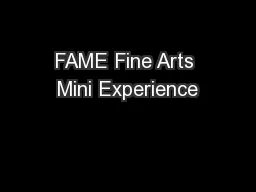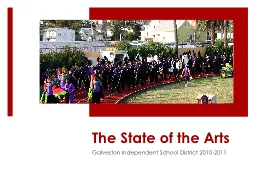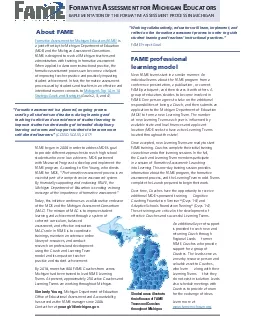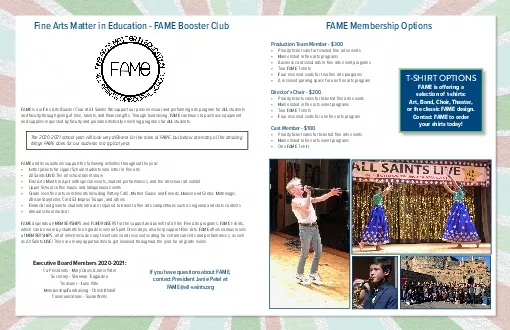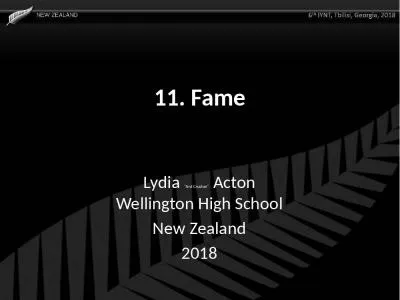PPT-FAME Fine Arts Mini Experience
Author : faustina-dinatale | Published Date : 2019-01-28
Le Billet Doux by Jean Honore Fragonard Musettas Waltz from LA BOHEME by Giacomo Puccini Fine Arts Music Art Literature Dance Art is made up of lines color light
Presentation Embed Code
Download Presentation
Download Presentation The PPT/PDF document "FAME Fine Arts Mini Experience" is the property of its rightful owner. Permission is granted to download and print the materials on this website for personal, non-commercial use only, and to display it on your personal computer provided you do not modify the materials and that you retain all copyright notices contained in the materials. By downloading content from our website, you accept the terms of this agreement.
FAME Fine Arts Mini Experience: Transcript
Download Rules Of Document
"FAME Fine Arts Mini Experience"The content belongs to its owner. You may download and print it for personal use, without modification, and keep all copyright notices. By downloading, you agree to these terms.
Related Documents

